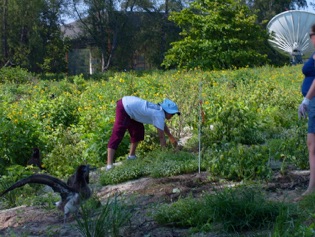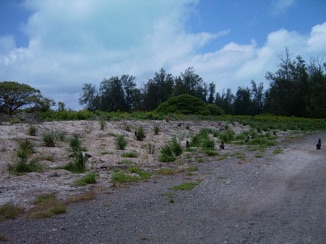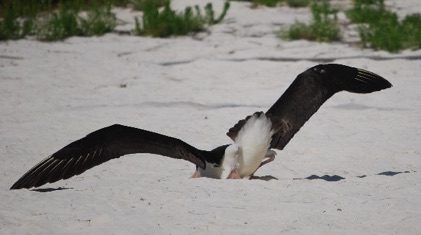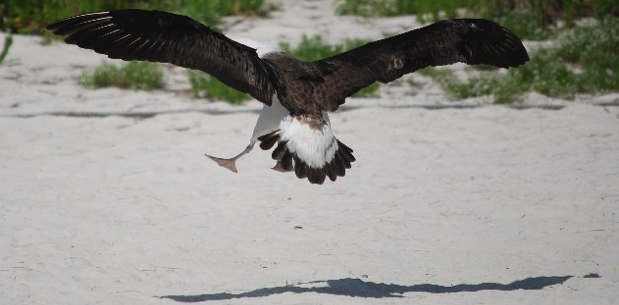Wednesday, June 17, 2009


One of the objectives of Papahānaumokuākea ‘Ahahui Alaka’i (PA’A) program is to assist the Midway Wildlife Refuge with some stewardship activities. In addition to helping them with their tagging program on Midway, we have also assisted them with the removal of invasive species from the island. Verbisina is an invasive plant to Midway. It grows in thick branching clumps and creates a hazard for the albatross’ 7-foot wingspan during take-offs and landings. The U.S. Fish & Wildlife Service has been working with volunteers over the past several years to eradicate invasive species from Midway and replace them with native plant species. After weeding the verbisina, we planted a native grass that will provide the albatross chicks with excellent shading in a few years without hindering them from taking off and landing when they become adults.

I really enjoy watching the albatross as they putter along the paths and fields for take-off. It’s also quite entertaining to watch them glide gracefully back to earth (shown in the top photo) only to finish their landing with a face plant (shown at the bottom of the page). At least they will have another soft grassy field to “crash” into in a few years instead of breaking their feathers in the verbisina. Meanwhile, I enjoy rating their landings as if they were Olympic divers or gymnasts. The albatross shown in the photo below scored an 8.5 on this landing. He suffered a one-point deduction for failing to stick the landing and another 1/2-point deduction for the face-plant follow-through. (View more low-flying albatross action in the Midway Movie Gallery.)

REVIEW TOPIC: INVASIVE SPECIES
Most invasive species, especially plants, are accidentally introduced to non-native areas. Removing invasive species from an area and replacing them with native plants is a very rewarding and gratifying experience. Check with your local wildlife and/or marine agencies to learn more about eradication (“to get rid of”) and replanting efforts in your region. Offer some volunteer hours to help these agencies restore wildlife areas back to their native habitats.

